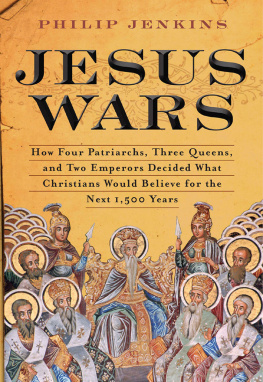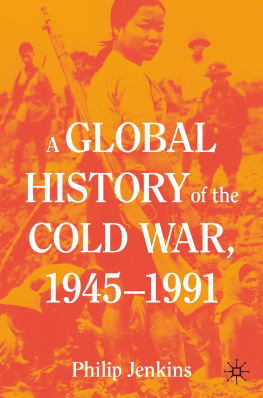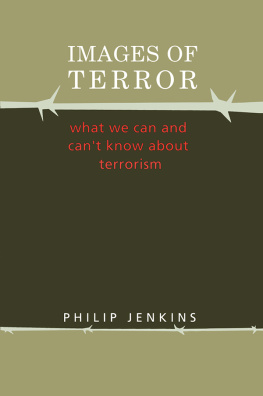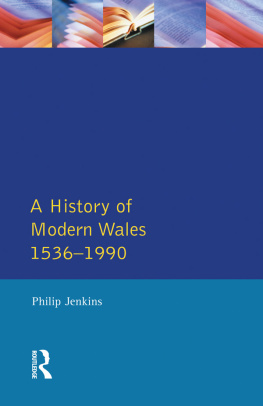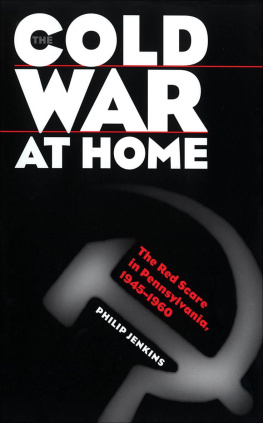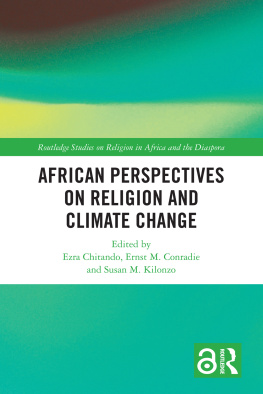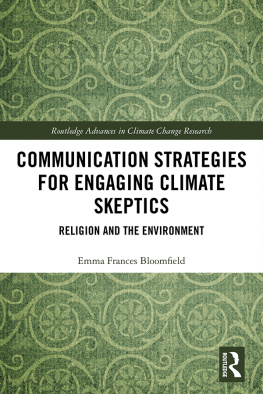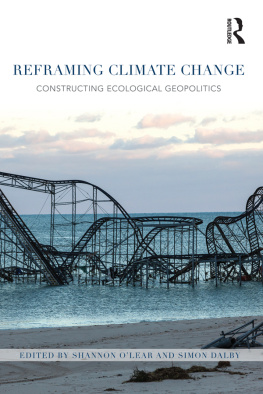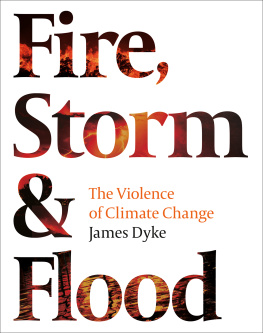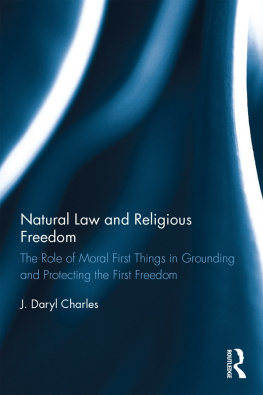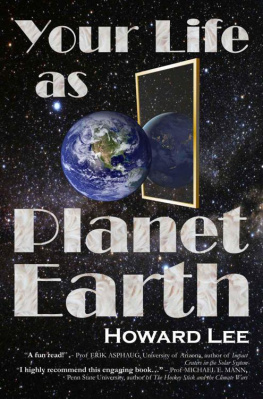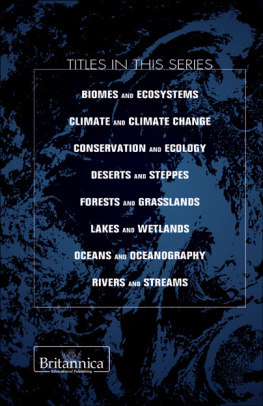Climate, Catastrophe, and Faith

Oxford University Press is a department of the University of Oxford. It furthers the Universitys objective of excellence in research, scholarship, and education by publishing worldwide. Oxford is a registered trade mark of Oxford University Press in the UK and certain other countries.
Published in the United States of America by Oxford University Press
198 Madison Avenue, New York, NY 10016, United States of America.
Oxford University Press 2021
All rights reserved. No part of this publication may be reproduced, stored in a retrieval system, or transmitted, in any form or by any means, without the prior permission in writing of Oxford University Press, or as expressly permitted by law, by license, or under terms agreed with the appropriate reproduction rights organization. Inquiries concerning reproduction outside the scope of the above should be sent to the Rights Department, Oxford University Press, at the address above.
You must not circulate this work in any other form and you must impose this same condition on any acquirer.
Library of Congress Control Number: 2021930033
ISBN 9780197506219
eISBN 9780197506370
DOI: 10.1093/oso/9780197506219.001.0001
For Diana
Contents
The English calendar differed from Continental usage before 1752, when the variation amounted to eleven days. All dates here are presented according to the Continental system, or new style, and the year is taken as beginning on January 1. That is important when I am describing periods of intense and rapid change, such as occurred between 1739 and 1742.
I am blessed with a splendid range of generous colleagues at Baylor Universitys Institute for Studies of Religion, including David Jeffrey, Byron Johnson, Tommy Kidd, and Gordon Melton. Special thanks to the incredibly knowledgeable Jeff Levin. Thanks also to Beth Barr and Barry Hankins, and (yet again) to the miraculous Cynthia Read of Oxford University Press. Thanks to Kathryn Hume for reading the manuscript.
Half a century ago, as an undergraduate at Cambridge University, I was supervised in social and economic history by the brilliant Roger Schofield (19372019), of the Cambridge Group for the History of Population and Social Structure. As it happened, these were precisely the years that the modern historical study of climate was being born, and Schofield and his colleagues were deeply conscious of the importance of that new movement for their own work in demography and social history. At the time, I had little inkling of just how cutting-edge was the work he and his friends were doing, or of how incredibly fortunate I was to share in those insights, however marginally. Nor did I realize how much those lessons would form my own thinking on historical matters, or think that they might someday find expression in a book of my own. My gratitude, then, to Roger Schofield for that early inspiration.
Thanks above all to my wife, Liz Jenkins.
Three things exercise a constant influence over the minds of men: climate, government and religion.... That is the only way of explaining the enigma of this world.
Voltaire
Historians place the sermon in its context, noting the underlying divisions within New England Puritanism and the theological disputes in which Edwards was involved. Rarely do they stress one fact that surely should be treated prominently: namely, that Edwards and his audience had in just the previous two years lived through a horrific period of extreme weather and glacial cold. Across Europe and North America, nations recorded some of the most alarming death rates seen in several centuries, while New England itself suffered the worst weather recorded since the time of European settlement.
Of course, the climate-driven crisis did not of itself spark or create the Great Awakening, and Edwardss sermon made no direct reference to that background. Yet it is difficult to comprehend the movements explosive growth at that very time without acknowledging that component. Similarly, throughout history, when other climate-related disasters have occurred, they have commonly had wide-ranging religious consequences. How could they not? As climate conditions have changed over time, they have affected human affairs and shaped attitudes. At times those conditions might have promoted prosperity, abundant food supplies, fertility, and general contentment. Quite frequently, though, we can identify periods of acute harm, either short-lived, such as that of 17391742, or much longer-lasting, such as the repeated hammer blows during the prolonged cooling period that has been termed the Little Ice Age.
Climate and Faith
Time and again, climate convulsions have been understood in religious terms, through the language of apocalypse, millennium, and Judgment. Often too, such eras have been marked by far-reaching changes in the nature of religion and spirituality. As in the case of the Great Awakening, this does not mean that climatic conditions directly caused such outbreaks or currents; rather, they created an atmosphere in which those changes could manifest themselves, and in historical terms this happened very suddenly. Depending on the circumstances, the response to climatic visitations might include explosions in religious passion and commitment, the stirring of mystical and apocalyptic expectations, waves of religious scapegoating and persecution, or the spawning of new religious movements and revivals. In many cases, such responses have had lasting impacts, to the point of fundamentally reshaping particular faith traditions. From those eras have emerged passionate sectssome political and theocratic, some revivalistic and
Throughout history, climate and climate change have been key drivers of religious developmentnot, of course, every innovation or movement, but many of them, and in remarkable diversity. Within Christianity, the warmth and prosperity of the High Middle Ages shaped the forms of Catholic faith and doctrine that emerged in that era and which served as a foundation for later times. Very different and much harsher climate conditions created the turbulence and polarization from which Tridentine Catholicism emerged in the 1560s. Several eras of climate stress played a role in the emergence and evolution of Protestantism, especially in its evangelical forms. Successive crises were essential to the rise and growth of the Calvinism that was such a vital force in the early modern era, as well as of Anglo-American Puritanism. Other later, transformative periods shaped evangelical and revivalist Protestantism and gave rise to many lesser-known sects, great and small. Climate factors likewise had their impact on important movements within other traditions, including Buddhism and Islam. Any historical account that ignores or underplays that climate dimension is lacking.
That history must come to mind when we contemplate the global climatic pressures that are predicted for the coming decades, and which will have their most acute effect in certain highly populated parts of the world. Based on extensive past experience, we can imagine many ways in which the response to those circumstances might take religious forms. We could foresee the rise of new apocalyptic movements, as well as the spread of bitter religiously based animosity and conflict. Although we cannot predict future events with any certainty, our historical background provides some guidance as to likely patterns. When we look at contemporary developments in both Islam and Christianity and at interfaith conflicts across Africa and Asia, it is difficult to imagine that catastrophic climatic changes might not inspire religious responses. When we trace the historical impact of climate-related change, particularly in the religious context, we see auguries of our likely futures.


